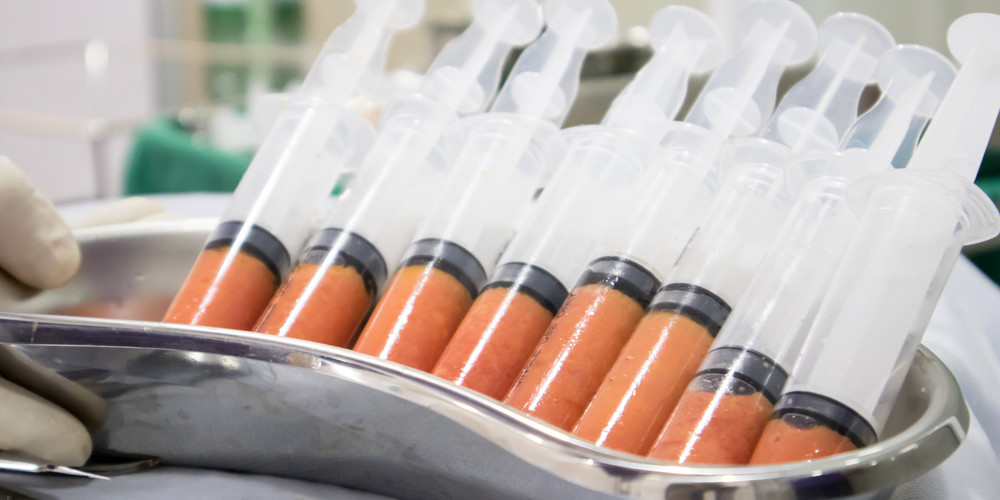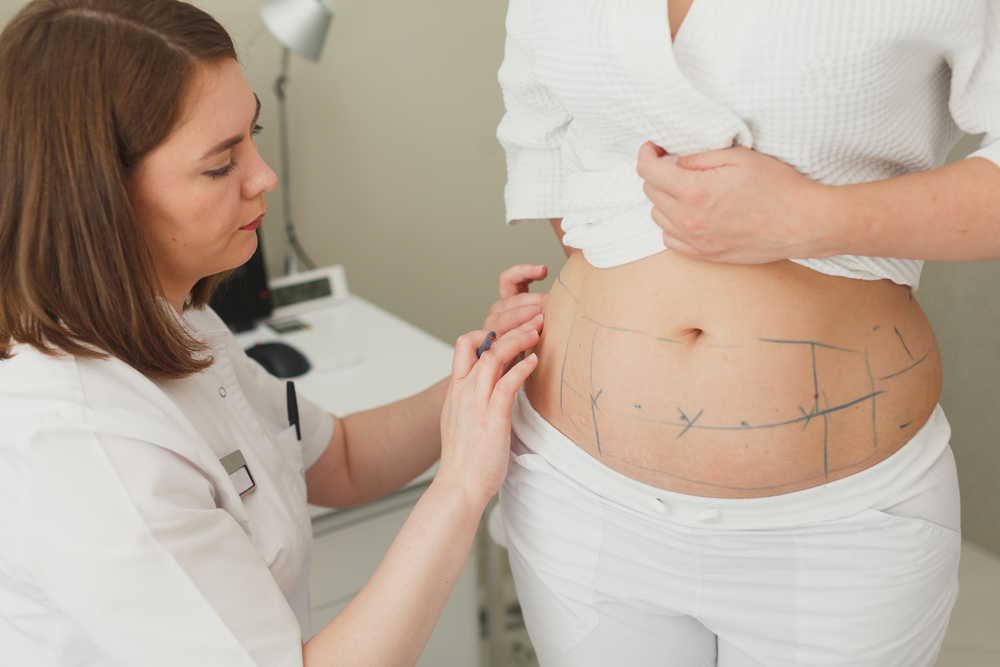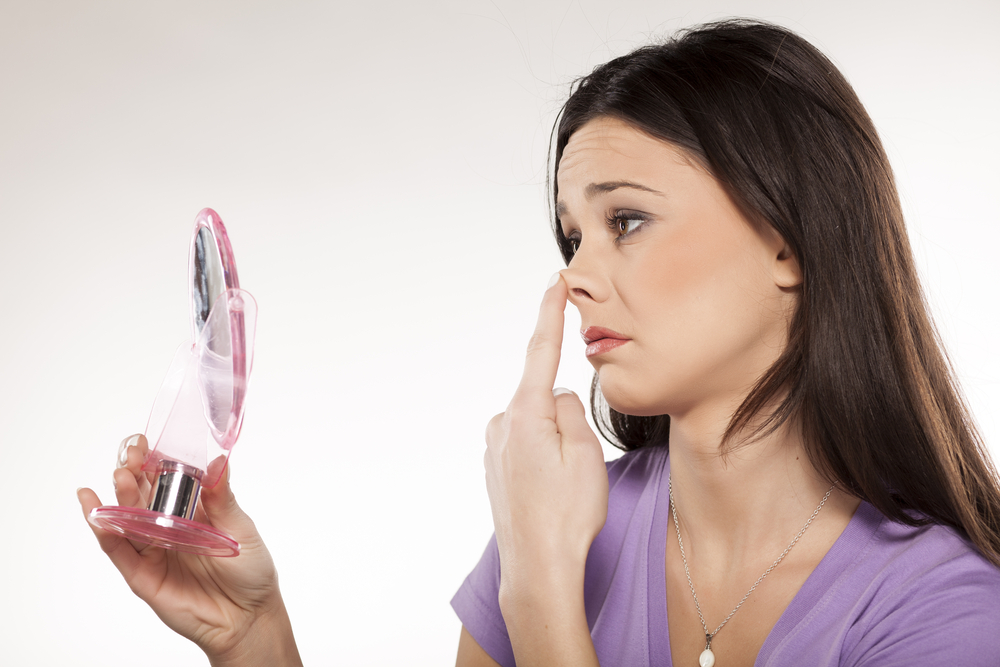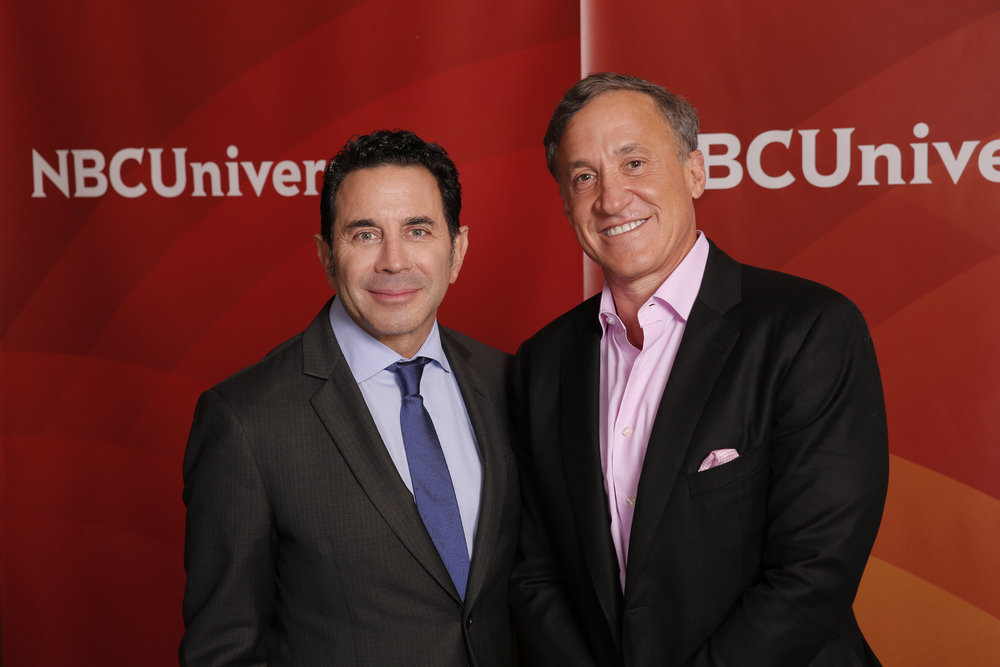Fat transfer is a procedure designed to restore lost volume and reverse the signs of aging. One of the added bonuses of a fat graft is that as you’re enhancing the look of one part of your body, you’re also removing unwanted fat from another.
In this guide we cover everything you need to know about this increasingly popular plastic surgery procedure before scheduling your first consultation.
What is fat transfer?
One of the most common effects aging has on the human body is a gradual loss of tissue volume in a number of very specific areas. Whether it’s in the face, breasts, buttocks, or even the hands and feet, this can leave you looking older than you feel.
A fat graft is a cosmetic procedure during which fat is taken from a donor site and reinjected elsewhere in the body, adding volume to that area. This is also commonly known as autologous fat transfer (autologous means that the donor and recipient are the same). When the fat injection is small, it’s known as microlipoinjection or micro fat grafting.
When performed alone, a small fat graft is usually done with a simple local anesthesia and performed as an outpatient procedure. Some doctors may offer an oral sedative for more nervous patients, although this is not required in most cases. General anesthesia may be required if a large amount of fat is transferred.
The specific type and amount of anesthesia required depends on the quantity of liposuction and fat transfer each patient’s unique situation calls for.
A standard fat graft is made up of three steps: fat removal, fat isolation and purification, and fat re-injection.
Fat removal
All fat graft procedures begin with liposuction to remove unwanted fat from a specific donor site that has been identified ahead of time. This can be performed on the abdomen, buttocks, hips, “love handles,” or thighs.
Areas in which the fat is too fibrous (like the male chest) are generally avoided.
The areas where fat is to be harvested are first injected with tumescent solution, which is made up of varying amounts of lidocaine and epinephrine, diluted in a solution of saline or lactated ringers. This helps prepare the fat for harvesting, provides pain relief, and aids to minimize bleeding.
Following infiltration with the tumescent solution, very low-intensity liposuction is used in order to collect as many undamaged fat cells as possible. A small-gauge hypodermic needle or a special cannula (a thin medical tube used in liposuction) is also used to limit damage to the fat cells, which is key to longer lasting results.
Mostly commonly, plastic surgeons favor the tumescent technique, although other types of liposuction that minimize damage to the fat cells can also be performed. Laser assisted liposuction technique such as SmartLipo should not be used as they destroy fat cells with heat.
Isolating and purifying the fat cells
Once enough fat has been collected from the donor site, the fat needs to be purified so that damaged cells are removed and only whole, undamaged, and cleansed fat cells are left to be used for the actual graft.
Excess fluid harvested from the body, as well as any tumescent solution infiltrated during that process, must also be removed prior to grafting. This may be done through an extremely high-speed centrifuge that spins the fat. This whirling action separates the fat cells from the liquids that are also removed during liposuction.
Another method used is manual “rolling” of fat on special gauze to absorb the damaged cells and excess fluids. There are also fat purification devices made for the specific purpose of processing and purifying fat for re-injection. Revolve, made by Allergan, is one such device.
Fat re-injection
The final step in any fat graft is the re-injection of the purified fat cells into the target site. By this time, the doctor will have already decided on the site for each fat injection, using his or her skill and experience to correct imperfections and create a new shape or contour. Different needles will be used to inject the fat cells at various depths to achieve the desired results.
It’s important to remember that in many cases, some of the fat that is re-injected into your body may be re-absorbed over time, causing volume loss. In fact, as much as 50% of fat absorption should be expected, but it’s difficult to predict exactly how much.
For this reason, many doctors will add more volume than you might think necessary to compensate for that loss. Touch-up treatments may also be required to achieve the best results.

RELATED: Fat Grafting Turns Liposuction Byproduct Into Liquid Gold
Fat transfer treatment areas
Volume loss is a perfectly natural and normal part of the aging process. There are a number of procedures that can address this reality, such as implants and synthetic fillers, but fat grafting offers several advantages over these options.
First and foremost, fat grafts use only your own, natural fat. The filler material doesn’t come from an animal, a donor, or even a synthetic product. It’s entirely yours. That means that there is absolutely zero risk of allergic reactions or of your body rejecting the transfer.
Secondly, once the targeted area has fully healed, it reveals amazingly smooth, natural and long-lasting looking results.
Fat grafting is such a versatile procedure that it can be used on nearly any part of the body where you want to add volume. The most popular areas are the breasts, buttocks, cheeks, lips, hips, and hands.
Breasts
If you’re looking into breast augmentation, but only want to increase your bust by about one cup size, a fat graft might be suitable for you. In such cases fat transfer breast augmentation can provide more natural looking results than implants.
Though less popular than traditional breast augmentation due to its limited ability to increase cup size, it’s that same limitation which makes this treatment ideal for breast asymmetry. It doesn’t take too much additional volume to correct a “lopsided” look.
When strategically placed, fat transfer can also give your breasts more fullness in areas that you think need it, like the upper portion or on the inner parts to enhance cleavage.
For this type of procedure, fat can be taken from your waist and those dreaded “love handles,” thighs, buttocks, arms, or even from your back. You will need to have enough “pinchable” fat in one or more of these locations. If you don’t, you may need to consider traditional breast augmentation with breast implants.
Buttocks
When performed on the buttocks, this procedure is more popularly called a Brazilian butt lift. A Brazilian butt lift enlarges and lifts the butt, providing you with a more youthful and perkier profile.
Just like any other fat graft, unwanted fat is removed from the areas around your posterior, like the abdomen, inner thighs, and love handles, and is re-injected into the buttocks. Fat transfer from stomach to buttocks is common.
Usually, a significant quantity of fat is required to achieve the desired results, which means in many instances, more than one donor site is used.
Face
One of the places where age related volume loss is most obvious is in the face. As you age, you start to lose the fat that gives your face a plump, youthful look.
Volume loss can be especially noticeable around the eyes, cheeks, and jawline. A fat transfer can be used to fill out the cheeks, temples, lips, and any other area of the face where it’s needed.
Hands and feet
If your face doesn’t betray the signs of aging, your hands will. As you age, the skin on the back of the hands starts to thin out, exposing the bones, veins, and tendons beneath. Wrinkles also become more pronounced and severe.
Fat can be taken from other parts of the body where it isn’t needed or wanted, like the abdomen, and used to give your hands a more youthful volume and appearance. This same procedure can also be done for the feet to help with similar age-related volume loss.

RELATED: Fat Transfer Breast Augmentation — The Natural Boob Job
Fat transfer vs fillers: which is best?
As you look into the options, you’ll probably come across some information regarding injectable fillers. This will undoubtedly lead you to question which treatment is best suited to your unique goals.
Both of these treatments are safe and effective for restoring age-related volume loss. That said, there are some important distinctions between the two, and it’s in your best interest to understand those differences before deciding on a treatment.
Materials used
The first and arguably most important difference is that while a fat graft uses natural fatty tissue from your own body, volume enhancement injectables such as Juvederm, Restylane, and Radiesse are composed of substances that have been manufactured.
There are a great many of these products available, some of which are specifically designed for wrinkles, and others that are most appropriate for volume loss.
Surgical vs non-invasive
Another important distinction between these two treatments is that a fat graft is more invasive than injectable fillers. With any fat graft, a small incision is required to allow fat to be removed and collected. This incision is so small it may only need one stitch to close.
Fat grafts usually require mild anesthesia, which can be a concern for some people. You’ll also need to be willing to accept the low levels of risk that are involved with any kind of minor surgery.
On the other hand, injectable fillers are minimally invasive, therefore having a significantly reduced recovery period. Of course, the extent and longevity of the results may be more limited as well.
Recovery
Recovery time represents the next significant difference between these two treatments. Fillers have virtually no downtime. This is because they are simply injected and effectively start working right away.
Often, the only noticeable side effects of injectable fillers are some mild bruising and swelling at the injection site. This usually takes a few days to subside.
Fat grafts, on the other hand, require more of a commitment to the recovery phase. Still, most patients can expect to be up and about fairly quickly, returning to their normal activities within a week or two following a fat transfer. Of course, the more fat that is removed and transferred, the longer the recovery may be.
Longevity of results
Treatments of this nature can be expensive, so the longevity of your results is extremely important. Most injectable fillers are, by their very nature, temporary. Depending on the formula, they typically last for approximately 6 to 18 months, with repeat injections being necessary.
Fat grafts, on the other hand, can last for years. This is because the process uses your own tissues, which are reconnected to your blood supply during recovery, functioning exactly as they did before being moved to a new location on your body.
Cost
Because fat grafts involve more work than injectable fillers, naturally they’re also more expensive. That said, it’s important to remember that the results of a fat graft are much longer lasting, with the body usually only absorbing a limited amount of the transferred fatty tissue. Often, only one treatment is required to achieve amazing results.
Fillers have a much lower up-front cost, but because most are only temporary, eventually being completely absorbed by your body, they need to be repeated regularly. This drives the cost up over time.
Results
We all know that the most important aspect of any treatment is its results. And in fact, both of these treatment options provide excellent results when performed by an experienced medical practitioner.
Fat grafts have the advantage of offering a more global improvement, while volume enhancing injectable fillers are much better suited for smaller, more precise improvements.
RELATED: Zwivel’s Complete Guide to Injectable Fillers
What treatments can be combined with a fat graft?
Fat grafts are a very popular treatment, and can easily be combined with a vast array of other cosmetic procedures to achieve a more complete result.
Injectable fillers
Not only do these two treatments help with similar issues, they can be combined for a more comprehensive result. Fat grafts do an excellent job restoring volume and lift to the face, with injectable fillers bringing improvements to fine lines and more precise areas.
You may also choose to use temporary injectable fillers in areas that you want to show the gradual effects of aging. Doing so may give you a more natural appearance.
For example, when you’re younger, plump lips may work with your youthful facial fullness. But as you get older, your lips may look over-inflated and become unnatural looking. In this case, temporary results would be preferable, which is why you may want to treat your lips with injectable fillers instead of fat transfer.
Other facial procedures
It’s very common to combine facial fat grafts with a variety of other facial surgeries for a completely new look.
Rhinoplasty, blepharoplasty or a facelift at the same time as a fat graft can help you achieve outstanding results.
Body contouring procedures
A fat graft doesn’t just add volume to your face or other areas where it’s needed, it also removes unwanted excess fat from areas where it isn’t wanted.
For this reason, many people choose to combine their fat graft with other body improvement procedures, like a tummy tuck, or liposuction of the abdomen and waist. These combinations result in a more curvaceous and appealing body contour.
Breast augmentation
While a fat graft can be used for mild breast augmentation by itself, it’s also fairly common for women undergoing breast augmentation with implants to combine the procedure with a fat graft.
While this combination won’t help either the implants or the graft to last any longer, it does give implants a softer, more natural look. Over time, it’s not uncommon for breast implants to slowly become more visible, and a fat graft can help to smooth them out and maintain your contours. It can also help fill in any areas that the implants can’t reach.
Buttock augmentation
Similar to breast enhancement surgery, a fat graft can be used to augment the buttocks as well (Brazilian butt lift), but is also often combined with augmentation using implants.
When buttock implants are inserted on their own they can’t correct asymmetry problems, nor can they give you that coveted hourglass shape, and, even when placed inside the actual muscles, the edges of the implants are often visible, especially in particularly thin patients.
For these reasons, a fat graft is often combined with the procedure to correct each of these limitations.
Am I a candidate for fat grafting?
Fat grafts can often soften or even eliminate aspects of aging “wear and tear” that appear on your face and body. Smile lines, frown lines, marionette lines (those unsightly lines that run from the corners of your mouth, straight down to either side of your chin), wrinkles, furrows, sunken eyes and cheekbones — these are all concerns that can be addressed.
Lips, hips, and buttocks that have lost volume over time can also be treated with a fat graft, as can scars or other depressions in the skin, like acne pock marks. Anyone suffering from one or more of these conditions could be considered a good candidate for this procedure.
If you’d like to check to see if you’re a suitable candidate for fat grafting, criteria include the following:
- You have enough excess fat that can be removed with liposuction, cleansed, and re-injected.
- You have realistic expectations, and fully understand that you might need to undergo multiple procedures to achieve your aesthetic goals.
- You want to enhance one part of your body by adding volume, while also removing unwanted excess fat from another part of your body.
- You are in a good state of overall health.
Contraindications to fat grafting
Very thin patients are not ideal for fat grafting, as a certain amount of “pinchable” fat is needed for the transfer itself. Patients who are unable to maintain a stable weight for a few months may not be ideal candidates for fat grafting either.
If you have recently undergone bariatric surgery or have lost a significant amount of weight in a short period of time, you may want to avoid the procedure, especially if you show signs of poor skin laxity. Further removal of fat in areas like the midsection can contribute to more loose, saggy skin.
Smokers also make poor candidates for fat grafts. Smoking can have a negative impact during recovery because nicotine constricts the blood vessels, preventing the newly transferred fat from connecting to your body’s blood supply. This leads to a high percentage of the transferred fat cells dying off both during and after surgery, causing poor results and an increase in complications.
There are also a number of medical contraindications that might make you a poor candidate for a fat graft. These include the following:
- Severe cardiovascular or renal disease
- Severe blood clotting disorders
- Active hepatitis or chronic liver failure
- Active cancer
- Morbid obesity
- Diabetes
- Major immunosuppression
- Pregnancy
- History of malignant hyperthermia
- Any history of poor wound healing
10 Fat Graft Preparation Tips
- Your initial consultation is the perfect time to do your homework.
Make a list of questions to ask your doctor to dispel any lingering doubts or fears you might have about the procedure.
You might ask how they process the fat, what kind of vacuum pressure is used for fat removal, the size of the cannula used for the liposuction and re-injection portions of the treatment, or even about the percentage of patients that need touch-ups or revisions.
- If you are a smoker, stop smoking immediately.
If you currently smoke, you’ll need to give it up for at least 2 weeks before your fat graft procedure. Smoking can have a negative impact on almost any medical procedure by slowing your body’s ability to heal and fight off infection. It also constricts the blood vessels.
This is an especially important thing to keep in mind for fat grafts because your body needs to establish blood flow in the newly injected tissue. Smoking can slow or even prevent this. While two weeks is the minimum, it’s prudent to stop smoking well before that time.
- Make sure you have some help.
While you may not be put under general anesthesia, it’s still a good idea to make sure you have someone available to drive you home. It’s always wise to have a friend or family member keep an eye on you for a couple hours after you’ve been discharged from the surgical facility to make sure you don’t suffer any complications from the procedure.
The chances of this are extremely small, but it’s always better to be safe than sorry. You might also need their help to perform simple tasks, especially if you’ve had a Brazilian butt lift or other high volume fat transfer.
- Drink plenty of fluids.
You’ll have both medication and anesthesia in your system after the procedure, and taking in lots of water or sports drinks (Gatorade) beforehand can help to flush it clean. As an added bonus, properly hydrated tissues heal more easily.
- Start and maintain a healthy diet with proper nutrition.
Depending on the unique specifics of your procedure, the healing process can be taxing on your body. Healing takes a lot of energy and requires the proper nutrients in the proper proportions.
Eating lots of healthy food in the weeks and days leading up to your fat graft will give your body everything it needs to heal afterwards.
- Prepare your home for your recovery beforehand.
This is especially true if you’re using a fat graft for a more substantial change, like in the case of a Brazilian butt lift. You won’t be able to sit or lie on your buttocks for about 2 weeks (or more), and you’ll need help moving around the house, getting food and water, and even using the restroom.
You’ll need a comfy spot to rest on your side and stomach, so it’s a good idea to get a couch or bed ready before you need it. Stock up on pillows — you’ll find them useful!
- Exercise.
Working out prior to a fat graft is important. While you do need extra fat in certain areas so it can be removed, purified, and re-injected, too much extra fat can disqualify you from the procedure all together.
Ideally, you should be within 35 pounds of your target weight. Of course, it’s advisable to avoid exercising vigorously the day or two right before your surgery, since you don’t want to be sore.
- Maintain good health prior to your procedure.
If you develop a cold, sores at or near the treatment area, or any other illness before your procedure, call your doctor right away. Even a simple common cold can increase the risk of complications, particularly infection.
- Avoid certain medications or supplements.
For example, garlic and ginseng are popular and common homeopathic remedies, but both can cause unnecessary and excessive bleeding because of their blood thinning properties. Stop taking these, any other non-prescription herbal remedies, as well as aspirin and any other blood-thinning medications for at least two weeks prior to your procedure.
Tylenol is safe for any aches and pains before the surgery. You also need to inform your doctor about any medications, vitamins and supplements you take in order to rule out any potentially negative interactions occurring.
- Make sure your expectations are realistic.
A lot of patients hope to see their final results only a few days after their fat transfer. But depending on the area your particular procedure treated, your final results may not fully reveal themselves for several weeks, or even months.
After the procedure, the treated area will be somewhat “tight,” swollen (and maybe too augmented for your liking), and possibly bruised. This will eventually fade, revealing your results. Be patient!
What to expect during recovery
Even though the fat graft procedure is fairly simple, it’s still a surgery and there is a recovery process involved.
Pain, swelling and drainage
As soon as your treatment is completed, you’ll notice some mild to moderate pain and discomfort. This is usually easily controlled with oral pain medication, and gradually fades within the first 48 hours or so of the procedure.
There will likely be some bruising and swelling around the injection site. This usually reaches its peak two or three days after the procedure, then slowly begins to fade. In fact, bruising and swelling usually start to subside very quickly, after about 72 hours.
You might also notice a little drainage from the incisions at the donor site for the first two or three days after the procedure. This is fairly normal and nothing to be concerned about. However, if the drainage becomes more pus-like and is accompanied by a bad odor, see your doctor as soon as possible as these are signs of a potential infection.
Severe pain is possible, but rare. if you experience severe pain don’t hesitate to call your doctor’s office immediately.
Compression garments
At the time of your procedure, your doctor might put you in an abdominal binder if your midsection is a donor site. This is a special compression garment that helps prevent blood and other fluids from collecting beneath the skin and improves contour irregularities.
For the first few weeks after your procedure, you’ll be instructed to keep it on at all times, except while bathing. It’s important to follow your doctor’s instructions regarding the compression garment to the letter. Not doing so can lead to a poor outcome or unnecessary complications.
Everyday activities and follow-up appointments
You’ll be able to go back to most of your usual activities right away. The real question will be whether or not you want to. Due to the swelling, many people choose to take a few days to a week off from work.
After a week, the vast majority of swelling will have subsided and any lingering bruising can be camouflaged with makeup.
You’ll likely be asked to book a follow up appointment approximately eight weeks into your recovery. By this time all the swelling should be completely gone, and your early results can be evaluated by your doctor. It’s at this point during your recovery that your doctor can assess if you’ll need more treatments to reach your goal.
Additional treatments will most likely have to wait at least three months to make sure the original graft has had enough time to connect itself to your blood supply through new blood vessels.
10 Fat Graft Recovery Tips
- Wear any recommended compression garments.
For certain fat grafting procedures, such as a Brazilian butt lift or breast augmentation, you might be asked by your surgeon to wear a special compression garment while you heal.
This medical garment may not be the most flattering thing to wear, but it’s essential to proper healing. Be sure to follow all your doctor’s instructions for its use because it will help you control swelling and bruising, as well as smooth out any contour irregularities that often appear right after surgery.
- Stay out of the driver’s seat for a little while.
Facial fat graft patients will usually need to take a day or two off from driving while they recover comfortably at home. On the other hand, Brazilian butt lift patients won’t be able to sit for long periods of time, so they won’t be able to drive for a minimum of two weeks.
That being said, the closer to six or eight weeks you can go without driving, the more likely you’ll be able to keep the fat transferred to your buttocks intact.
- Don’t smoke.
Smokers need to continue to abstain for a minimum 2-3 weeks following the procedure. Smoking is never good after a surgical procedure, but it’s an especially big no-no after a fat graft.
This is because your newly transferred fat cells need to re-establish that life-giving connection to the blood supply or they will die.
- Wait to exercise until your surgeon says it’s okay.
Exercise is a great way to get the blood pumping, and sweat helps remove toxins from your body, but you’ll want to put off any strenuous activity until your surgeon gives you the green light. In the case of high volume fat transfer, this could possibly be as long as two months into recovery.
During these first weeks, the newly transferred fat needs to establish proper blood supply, and exercising too early can disrupt this. You can do some light walking during this time, but be sure not to burn too many calories or put too much pressure on your newly grafted fat.
- Stay hydrated.
Hydration is always the key to good health, but it’s even more important while your body is working hard to repair itself. It relies on water to help it clear away waste and toxins as well as move much needed nutrients throughout your body.
Sports drinks like Gatorade provide an added boost of electrolytes to the healing body.
- Maintain a healthy diet following the procedure.
Your body will need extra calories and nutrition to power the extra work required to provide those new fat cells with a supply of blood and aid in recovering from the procedure.
Sticking to a diet that is nutrient-dense will provide your body with everything it needs to support your recovery. Try avocado, salmon, almonds, and coconut oil to add healthy fats to help with your recovery.
- Maintain a stable weight during and beyond recovery.
Significant weight changes can have a negative impact on your results. In the case of facial fat transfer patients, weight loss can cause you to lose fat in your face, especially if the loss is caused by high impact sports, like running.
On the other hand, weight gain tends to have less of an effect on the face. For buttock fat transfer patients, however, weight gain can cause severely undesirable effects. Gaining significant weight after treatment may cause your buttocks to become larger than you’d like. Fortunately, any weight gain will usually be proportional.
- Get creative with your sleeping arrangements.
It’s important that you don’t put too much pressure on your healing fat grafts during the recovery period. Squishing your newly grafted fat any time during the first two months can lead to poor results.
As such, if you had a fat graft on your buttocks or breasts, you’ll have to sleep accordingly so as not to disturb your body’s healing.
- Avoid blood thinning medications or herbal supplements.
Unless otherwise discussed with your doctor, you should continue to avoid blood thinners for at least two weeks after your procedure. You’ll be able to take Tylenol and any pain medications prescribed to you by your doctor.
- Don’t skip your follow-up appointments.
If any questions or concerns arise during the course of your recovery period, don’t hesitate to call your doctor. Complications from fat grafts are extremely rare, but it’s always best to keep your doctor in the loop for the easiest recovery and best looking results.
Weekly timeline of results
Recovery and results following a fat graft procedure can vary significantly from patient to patient. In fact, while some patients might be able to see their results almost right away regardless of where on their face or body they were treated, others might need to wait several weeks for the swelling to completely fade.
It all depends on your body and recovery rate.
In general, most people are able to see their final results slowly revealed over the course of 3 to 4 weeks, and possibly longer when higher volumes of fat are transferred. The main issue that delays the visibility of your results is swelling.
- Week 1
Swelling and bruising can often be rather significant during the first week. Your results might be hard to see, or even completely hidden.
- Week 2
At this point in your recovery, the bruising should be mostly gone, but often some swelling still remains. You’ll be able to wear makeup to hide any lingering signs of the procedure, but your results might not be fully apparent yet.
There’s usually a lot of improvement between the 7th and 10th days, but many people still aren’t ready to be seen in public yet.
- Weeks 3 – 4
By the third week most people feel like they’re starting to look more like themselves, and the final results begin to be revealed. Once the swelling completely recedes, you’ll be able to fully appreciate the changes made to your face, body, or hands. But keep in mind that sometimes swelling will persist for five or more weeks.
- Six months
Six months after your procedure, the newly grafted fat will have reached its full volume and you’ll be able to enjoy your final results.
In the end, you can expect a softer, fuller appearance in the areas where the fat was transferred, leaving you looking refreshed and rejuvenated. Many people will also notice an improvement to their skin texture. Fat transfer before and after pictures can be quite impressive. Results have good longevity, usually lasting years.
RELATED: Eating Healthy for Faster Recovery
Limiting fat re-absorption
One of the main concerns patients have about their results is the problem of fat re-absorption. Due to natural processes much of the fat that is re-injected will be absorbed by your body, robbing the treated area of volume.
The survival of the fat and longevity of the results depend on a number of factors, including your surgeon’s skill, the process through which the fat was removed, purified, and re-injected, and your own behavior during your recovery.
Depending on these elements, anywhere between 20% and 90% of the transferred fat can be absorbed, although the average is somewhere between 25% to 50% when advanced techniques are applied. Experienced surgeons are of course aware of this loss, and plan for it during the procedure.
These are a few things you can do during your recovery to make sure your fat re-absorption rate is low:
- Wear appropriate clothing
In addition to the compression garments your doctor gives you, you’ll need to wear loose fitting clothing during your recovery. Squeezing freshly transferred fat into tight clothing is one of the fastest ways to kill it.
- Be mindful of how you sleep
For the same reasons you shouldn’t squeeze your new fat graft into tight clothing, you shouldn’t sleep with your weight on the graft for at least two months.
For facial fat transfers you should ideally sleep on your back, keeping your face out of the pillow. Breast augmentation patients should sleep on their backs as well. Buttock augmentation patients, on the other hand, should sleep facing down to keep weight off their backside.
- No smoking
Your transferred fat needs to make a connection with your body’s blood supply in order to take hold in its new location and flourish. Smoking prevents that from happening. Cigarettes affect the flow of oxygen and nutrients through the bloodstream, effectively crippling your body’s ability to heal.
For newly transferred fat, this means certain death.
- Feed the fat
During your recovery phase, your body will need extra calories to continue to provide your transferred fat with blood. Eating nutrient-rich foods with healthy fats will help your body form a lasting connection with the graft and ensure most of it isn’t re-absorbed.
There’s no real way to accurately predict how long the results of a fat graft will last, but under the right circumstances it can be for a very long time, with some surgeons claiming the results are essentially permanent.
The are the potential risks and side effects?
As with every medical procedure, fat grafts include a certain element of risk or complications. The most common side effects reported by patients are swelling and bruising, but other complications can be seen at both the donor and injection sites.
Some of these complications and risks include:
- Infection
- Seroma or hematoma, which are fluid or blood accumulations under the skin
- Reaction to the anesthesia
- Damage to the underlying structures
- Scarring
- Skin or fat necrosis
- Loss of sensation
- Permanent skin discoloration
- Fat embolism
- Blood clots
- Poor or unexpected results
- Asymmetry
How much does fat transfer surgery cost?
There are a lot of factors that go into calculating the cost of a fat graft treatment, and one of the most important is the reason for the graft. For example, if you’re applying the fat graft to a lip enhancement, the price will be very different from that of a procedure to augment your breasts or buttocks. The size or extent of the treatment area also plays an important role in determining cost.
The anesthesia used, where the procedure is performed (i.e. as an outpatient or in-hospital procedure), your doctor’s skill and experience, and even your geographic location can all play a role in what you pay for the treatment.
In general, you can count on fat grafts costing more than other injectable fillers like collagen, Sculptra, or Restylane, but even that can be difficult to predict. They are, however, consistently more expensive than liposuction alone. This is simply because liposuction is only the first part of a 3-part process.
- The cost of a fat transfer to the face can reach anywhere from $350 for a smaller procedure, to $5,000 for more extensive treatments. On average, facial treatments cost about $450 to $750, and $900 to $1,200 for the lips.
- For breast augmentation, fat grafts generally cost between $4,000 and $15,000.
- Fat transfer to buttocks generally falls between $6,000 and $9,000, depending on the quantity of work to be done. These prices may or may not include touch-ups at a later date.
Be sure to find out what is and isn’t included in the fees well before your procedure.
Insurance coverage
Unfortunately, fat grafts performed purely for cosmetic reasons are never covered by health insurance. However, if the procedure is deemed medically necessary, performed to repair scars or to treat localized fat-loss after an injury, some or all of the cost might be covered.
If you think this might apply to you, speak to your doctor or insurance provider about your coverage.
Financing
Because the cost of the fat graft procedure varies from patient to patient and goal to goal, it’s easy to imagine the price increasing beyond what you can afford.
Luckily, most dermatologists, cosmetic surgeons and other medical practitioners who offer this procedure also offer easy financing plans. Be sure to discuss all your financial options with your doctor during your initial consultation.
Fat graft FAQs
What is fat grafting?
Fat grafting is when fat is transferred from one area to another. Autologous fat transfer is when the fat is taken from your own body and reinjected into another part of your body.
What does the procedure achieve?
Fat transfer is used to enhance volume and erase contour irregularities.
I have hollow eyes. Can fat transfer help?
Yes, the area around the eyes can benefit from fat transfer. Hollowness and dark circles can both be improved. However, there are mixed reviews on fat injections for the eye area, with complaints regarding undesirable bulging.
How much fat can be transferred?
This depends on the patient and their goals. When the face is treated, only a few cubic centimeters (cc’s) of fat are typically required. When the buttocks or breasts are treated, a hundred or more cc’s may be necessary. The amount of fat that is taken from the donor site is usually about two times more than what would be reinjected.
Can I get fat transfer performed at a doctor’s office?
For small volumes of fat transfer, typically for the face, the procedure can be performed in your doctor’s office. For fat transfer breast augmentation or a Brazilian butt lift, the procedure is performed in a surgical facility.
Will the skin at the donor site get saggy?
When a lot of fat is removed, your skin will need to tighten up to the leaner contour. Wearing your compression garment will help this process. If only a few cc’s of fat are removed from the donor site, loose skin won’t be an issue.
Can I get it done more than once?
Yes, as long as you have sufficient fat to transfer, the treatment can be performed more than once. In fact, you may need more than one treatment to achieve your desired results.
Usually, you’ll need to wait a few months before having another procedure done. This allows for enough time to recover from the first procedure and for the majority of swelling to subside.
I don’t have enough fat. What can I do?
Your doctor may recommend that you gain weight. This should be done in a controlled manner so you don’t gain too much. After a certain period of time, your doctor will examine you to ensure you’ve gained enough.
Can someone else donate their fat to me?
Unless that person is your identical twin, you won’t be able to use fat from another person. It must be your own. This is because fat from another person would be considered a foreign object, and your body’s immune system would react by attacking it.
Fat transfer vs. implants: which is better?
The answer to this question depends on the amount of fat you have available and your specific goals. Generally speaking, fat transfer has a shorter recovery period and you won’t need to worry about having a foreign substance in your body.
However, if you don’t have enough fat to transfer to your breasts or buttocks, you may have no choice but to opt for synthetic implants to get the volume you desire. The implant is generally constructed from silicone.
Can I use fat from my breasts?
Most surgeons avoid using the breasts as a donor site because there is often an insufficient amount of fat available to fully achieve the desired results. Some doctors are also concerned about the risk of spreading cancer cells from the breasts to other parts of the body.
Can fat grafting help give me better cleavage?
To a certain extent, fat grafts can help improve cleavage. The fat would be placed in the area of the cleavage and upper portion of your breasts. However, you should know that it can only do so much. So if you have a considerable gap between your breasts, this may not be helpful.
How long does the procedure take?
Small areas, like the cheeks, take about an hour while larger areas, like the buttocks, generally take anywhere from 3 to 5 hours.
Can I save my fat for later?
While it is possible to freeze fat for later use, the process may compromise survivability so not many doctors won’t recommend it. Therefore, if you need to have another treatment performed, chances are you’ll need to go through the whole process of removing fat again.
How long do results last?
Once the fat has “taken”, results are permanent. However, the effects of aging and weight fluctuations can negatively affect results.











